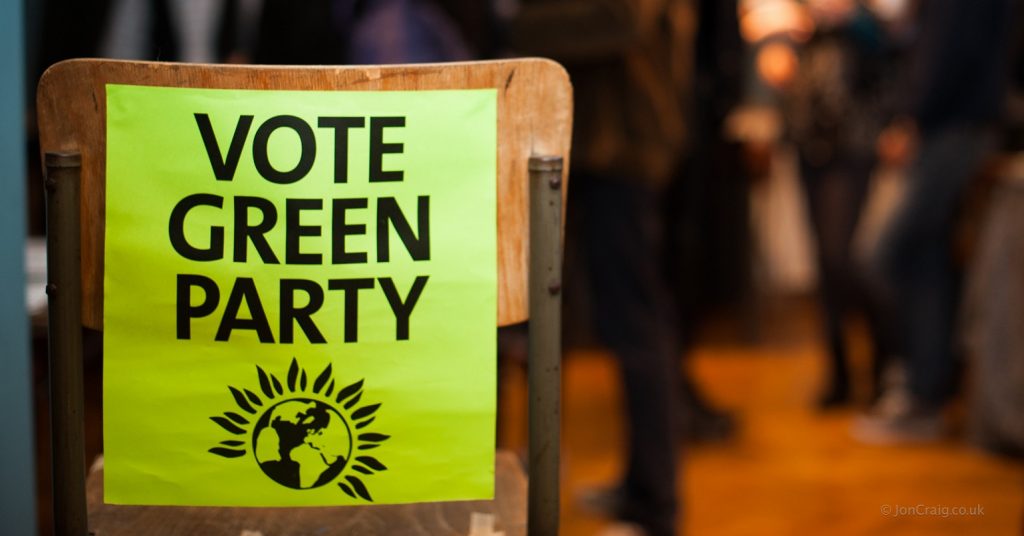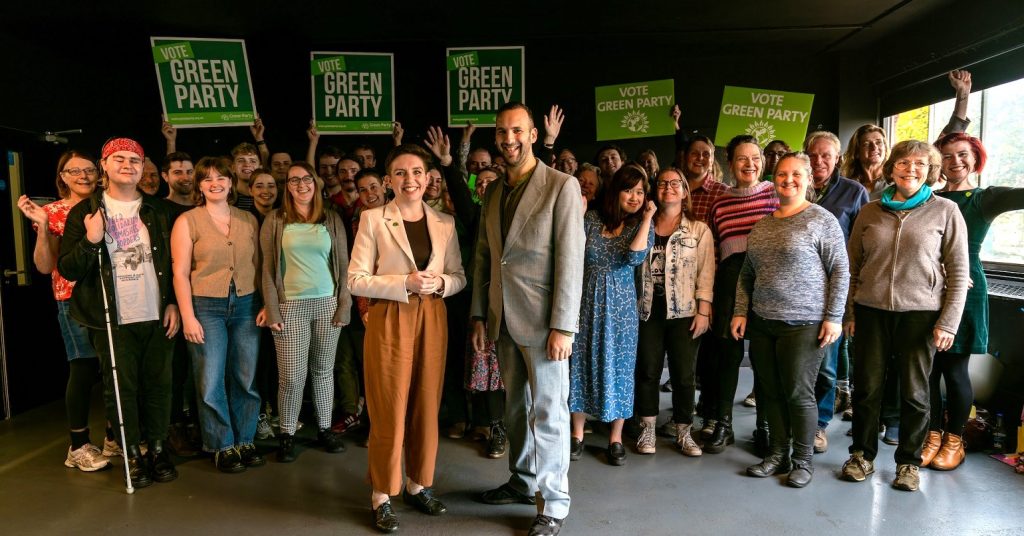Here’s how the Greens would build 500,000 council houses
 By now, many of you will have heard, or at least heard of, LBC radio’s interview with Green Party of England and Wales (GPEW) leader Natalie Bennett in which she stumbled badly over the detail of her (excellent) policy to build 500,000 new council houses over 5 years.
By now, many of you will have heard, or at least heard of, LBC radio’s interview with Green Party of England and Wales (GPEW) leader Natalie Bennett in which she stumbled badly over the detail of her (excellent) policy to build 500,000 new council houses over 5 years.
As Guardian writer Zoe Williams said today, the impact is vastly overstated by people for whom politics is their favourite spectator sport. In reality, there are far, far worse crimes than blowing an interview, and the leaders of the establishment parties have treated us to a devastating selection of them over the years. The fact that more people joined the Green Party yesterday than on any other day over the past fortnight suggests that actually, many people would rather have a politician who tries to make a difference even if it’s hard, than explain with ease why nothing can change.
But one of the most frustrating outcomes of yesterday was that the impression was given that because Natalie didn’t have the figures to hand, they didn’t exist. They do. So I wanted to set out exactly what the answers to Nick Ferrari’s questions actually are, for anyone who is wondering.
The GPEW proposal is to build 500,000 new homes by 2020. Good-quality, sustainable social housing can be built for around £100,000 per unit in upfront costs; but for medium to long-term budgeting purposes you should then factor in the revenue stream the house will generate, paying back on its own build cost. So GPEW estimate an overall cost of £60,000 per house, for a total of £30bn over the 5 years.
Of the £30bn, £7.5bn, £1.5bn per year is already in the budget. The bulk of the remaining £22.5bn will be raised by abolishing the subsidy to buy-to-let landlords which allows them to pay no tax on their mortgage interest payments. This would raise at leastGPEW’s very conservative estimate of £4.5bn per year by 2017, but since recent reports value the landlord subsidy at £5.8bn and beyond, it’s actually very likely it could pay for the whole project on its own. You can see all these figures in the table below:
If, after abolishing the landlord subsidy, there is still some money left to find, it will be covered from the savings that will automatically arise from the programme itself: reduced housing benefit payments, reduced costs of healthcare and emergency accommodation, and increased tax revenue from the economic stimulus of all that construction work. For every £1 spent by the public sector on housing, 56p returns to the Exchequer in tax revenues and benefit savings (see page 11 of this report for the UK Contractors Group).
You can read all of these details and more in the Green Party of England and Wales policy brief, 500,000 Social Rented Homes by 2020.
So there’s the missing detail, fully costed and fully funded. Maybe that’s what Natalie should have said. But then again maybe not, or at least not all she should have said. Because while we need to be able to answer questions of detail, our purpose is to change a political and economic system that everyone can see is failing, not just explain how our plans are compatible with it.
I think it’s high time that people who want to demand explanations of how we can afford to meet the basic duty of putting a roof over the heads of every person and family in this country are first asked: how can we afford not to?
- Gary Dunion is Communications Co-ordinator of the Scottish Greens and a potential Scottish Parliament candidate for Central Scotland. This piece was originally published on his blog here.





Can someone please tell me how land would be allocated for these houses would be built? I do hope you’re not talking more greenfield land to go under concrete.
Greens would prioritise brown field sites of which there are many – not favoured by developers generally and often in town where affordable housing would be most useful.
Councils themselves can grant planning permission to cheap land which they could buy before it has planning permission. Industrial waste land and other bits of unused and cheap land. A large perecntage of the cost of new houses is the land it sits on rather than the walls and roofs.
I applaud the desire to stop people with money buying housing in order to make profit at the expense of those with less. My concern is that the higher bills those “buy to let-ers” subsequently need to pay will cause many to sell. Great for lowering house prices. Not so great if many people suddenly find themselves in negative equity across more than one property and not the money to pay their mortgages. Do you know how many of these “buy to let-ers” own more than 2 houses? Have you forecast the impact this may have on house prices and whether many of those same people will find themselves in negative equity? Can you reassure everyone that the second and third order consequences of this proposal have been fully considered? If not, are there serious alternative ways of achieving this aim whilst ensuring no one loses more than some profit?
Why should people who have chosen to invest in buy-to-let have special protection to guarantee they do not make a loss? If you buy shares or corporate bonds, you risk losing all your money, not just the possible profit. National Savings is a totally safe investment, but people going in for buy-to-let want higher returns than NSI can offer. With higher returns come higher risks. And if you borrow to invest, that’s gearing, which allows bigger profits – and bigger losses. Caveat emptor.
The thing here is that although especially the buy-to-let landlords and likely many homeowners will end up in negative equity with the inevitable knock-on effects to the market, it’s very much a double-edged sword in terms of our actual population – there’s an entire generation out there who may never be able to afford a home, in fact the only way many working class people may get one is if their parents leave them one in their will. Also is negative equity the worst thing that can happen? Presumably if you’re a homeowner and you can afford the mortgage now, you can afford it the next day when the housing prices drop everywhere else. Providing you’re treating your house as a home and not an investment then there’s little actual effect on your life. Maybe some people don’t get to move up the ladder, but a lot more people can get ON the ladder in the first place. And those younger people are currently the most victimised and the least responsible for the financial crisis, so fair play to them. The landlords have filled their purses for long enough at their expense. So basically – tough shit, shouldn’t have bought a house when the prices were ludicrous.
Here’s some more thoughts on housing policy written for Scotland’s Commonweal http://www.allofusfirst.org/resources/library/housing-for-a-better-nation/
What about low-cost, low-impact, self- and cooperatively built houses? Straw bale, cob, timber frame? Rehabilitation, empty buildings orders? These are the way we need to be moving if we are to solve the housing crisis affordably while transitioning to a zero-carbon economy and promoting social justice. It’s true that Green housing policy (http://policy.greenparty.org.uk/ho.html) has something to say about these issues, but why aren’t they being published more widely, now that the housing policy is in the news?
… the whole private rental sectors would be damaged. Are we sure we want that?
Yes, I do want people who let houses for excessive profits to lose some of that. It won’t effect people who already have inherited or have spare money to buy a house to let will it? In the long term people with a lot more wealth than those in poverty should lose/donate/ invest a fairly large proportion of that wealth imo in helping those less fortunate than themselves. (As in Sweden)
As far as Natalie goes, it seems to me she has bad interviews and reasonable ones. Hopefully she will have more reasonable ones, some good and few bad ones or if she cannot will move on. Think the GP is different from the rest though, and we should emphasise that it is policies not PR that counts. Can’t see why Natalie, or anyone else for that matter cannot, have a notebook or tablet with her when interviewed with the key points of the particular policies being discussed.
Do people being interviewed on shows know what they are going to be asked. If not, why not?
I understand and share the wish to make it harder for what we think of as the typical buy-to-letter. Although my feeling is that the injustice is not so much the tax relief on the interest as the fact that people are leveraging their own relatively privileged financial situation (usually including their own home ownership) in order to grab houses to let to less fortunate people. It’s a matter of getting on the ladder and then snatching it away from other people. My worry is not hitting them, it’s the wider question of how to treat the large companies who rent out houses as a purely commercial operation, and will structure themeselves with both debt and equity. People like Grainger plc which has been investing in residential property for over a century.
The only worry I have about this is how easy it is to remove the tax allowance on interest, especially if buy to letters turn themselves into limited companies. If interest payments on loans were generally disallowed as business expenses,
Can u clarify the £40k income each house will generate over 5 years – mentioned in 4th para? That’s £12.5k a year if all homes built in first year, which is over £1000 rent a month which doesn’t sound very affordable. Is there another revenue stream apart from rent?
Also emergency accommodation costs would be saved by local authorities not central gov yes? Is this policy going to allow local authorities to build their own social housing again?
What is at issue is not how the Greens would fund their housing program but why, after fighting so hard to get more coverage in the media, they put forward such an inept representative as Natalie Bennett. She is single-handedly destroying any chance of doing well in the election and must be replaced before she does any more damage. What was asked in each of her cringe-worthy interviews was a perfectly reasonable question which any politician should be able to answer in a succinct and convincing way. After begging the media to give more publicity, you can’t now blame them for publicising the results of their efforts.
Very clearly explained (the detail) and emphatically put across (the principle). My fear is that this articulate piece will be massively under-represented in the mainstream media while the soundbites of Natalie Bennett’s fumbling will be played to death in an attempt by the establishment to undermine the green surge. I just hope people realise that they’re doing this because they fear the Greens’ growing popularity and what this means for those aiming to continue with business as usual.